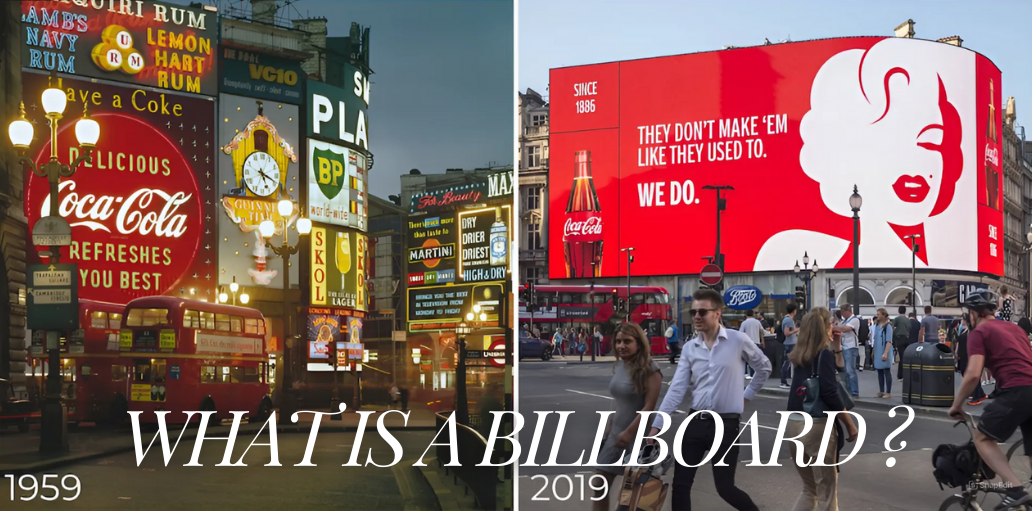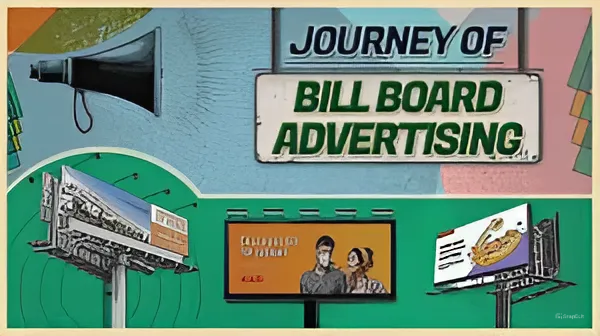Let’s talk about advertising before we go about its type, which is billboard advertising. Advertisements are generally seen and known as an ad or an advert. It is considered and defined as a public communication method that promotes anything that can be a brand, person, service, product, or event. To some point, it can be way broader than that, extending to any paid communication designed to influence.
There are many types of advertisements. In today’s topic, we will talk about well-known and well-seen billboard advertising.

What is a billboard?
Everyone knows the famous Times Square, right? All the big neon lights, advertisements, and signposts? Thousands of people must see those ads every day. They do get an impression, even if they see it just for a second. These impressions lead to brand promotion and sales.
Now let us talk about a billboard. The “billboard” word is derived from the term “billing board.” A billboard is an outdoor advertising structure, similar to an overly large poster, used to promote a campaign, brand, or product through their advertisements. Billboards are generally located in high-traffic areas, such as near shopping malls or along highways, to grab the attention of most of the individuals passing by.
What is billboard advertising?
The process of using large-scale print and digital advertising boards is known as billboard advertising. Big billboards or hoardings to promote a brand, product, or campaign are widely used. It is an offline form of media or advertising.
For getting the most number of views and brand impressions that stay for a long period of time, it is an efficient marketing strategy. It establishes a strong branding image through huge font sizes, images of famous celebrities with clearly stated features and benefits of the products, and other important information such as sale, offers, and cost.
History of Billboard Advertising
For the last 150 years, billboards have been a recognisable and successful kind of outdoor advertising, drawing in the public, strollers, and drivers.
How and when did billboards get their kickstart? And how do they work today?
Let’s look at the history of billboard advertising and why it continues to be a prominent promotion tool, even digitally.
Even before the rise of the billboard industry, outdoor advertising existed. by having local businesses make signs or posters to advertise the goods they are selling and hang them on their fences or buildings. Billboards were started in the 1830s to advertise traveling shows.
Billboard has ever since been on the rise.
Here’s a timeline and significant milestones in the growth of billboard advertising.
1835
The very first billboard advertisement. Posters of the size of 50 square feet were built by Jared Bell in New York to advertise none other than Barnum & Bailey Circus in 1835. Billboards in the early 1800s took too much labor and time, as they were drawn and painted by hand.
1867
People started leasing space for billboards.
1889
At the Paris Expo, a “twenty-four-sheet” billboard was introduced. They were 20 feet by 9 feet, consisting of 24 sheets joined together to create a large image. Further, they became the standard form of billboards.
1905-1940
When the model T was released in 1905, cars became attainable for the first time. The estimate of motor vehicles was 78k in the United States. By 1940, the number was over 27 million.
1953
President Eisenhower enacted the US’s Interstate Highway System, which further led to an acceleration in Americans’ mobility. 49,000 miles of highways were created by the Interstate Highway System.
Who can use billboard advertising?
Many different kinds of businesses and groups can use billboard ads. Big businesses opt for the use of large billboards along the road to communicate information about their brand and new offerings. Small and local shops can use billboards to bring in more customers from their area. Non-profit groups and government offices can use billboards to share important messages with the public and connect with the community.
Event organizers use big signs to tell people about concerts, festivals, and other fun things happening in their area. Political campaigns use big signs on the side of the road to get lots of people to see their messages. Basically, anyone who wants to reach a lot of people fast can benefit from using billboard ads because they are seen by a lot of people and make a big impression.
Conclusion
These technological innovations and infrastructure investments created a landscape where advertisers could get their promotions done in front of Americans on the go. There are now 350,000 estimated billboards in the United States, and 10,000 of them are digital billboards.
